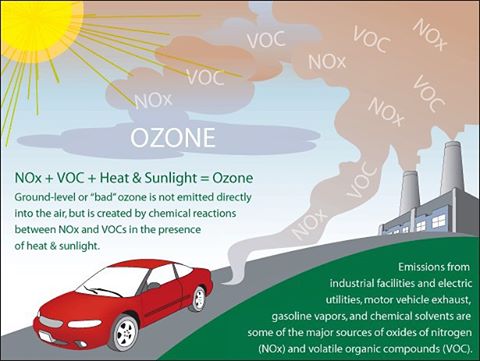Ozone Pollution
This page is a part of our series on each of the criteria air pollutants. Click here to learn more about air quality and air pollutants.
Ground-level ozone — or “bad” ozone — is not emitted directly into the air, but is created by chemical reactions between oxides of nitrogen (NOx) and volatile organic compounds (VOC) in the presence of sunlight. Emissions from industrial facilities and electric utilities, motor vehicle exhaust, gasoline vapors, and chemical solvents are some of the major sources of NOx and VOC.

Breathing ozone pollution can trigger a variety of health problems including chest pain, coughing, throat irritation, and congestion. It can worsen bronchitis, emphysema, and asthma. Ozone pollution also can reduce lung function and inflame the linings of the lungs. Repeated exposure may permanently scar lung tissue.
Ground-level ozone also damages vegetation and ecosystems. In the United States alone, ozone is responsible for an estimated $500 million in reduced crop production each year.

